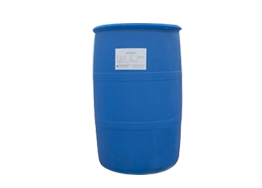Some surfactants can be used to disperse small solid particles (especially pigments) in liquids. Alkylglycosides are attached to pigment particles by selective adsorption.
In water-based system, hydrophobic (oil-friendly) groups are adsorbed on the surface of particles, while hydrophilic (oil sparing) groups extend into the aqueous phase. If ionic surfactants are used, the pigment particles are separated from each other by the action of charge stabilization. Charge stabilization is due to the repulsion force around the particles; because all particles are surrounded by the same charge, they are mutually exclusive when they are close. In some waterborne coating systems, it is also necessary to provide the stability of potential resistance around particles by non-ionic surfactants.

Unlike water-based systems, in non water-based coatings, the hydrophobic group adsorbs on the surface of the particles, while the hydrophobic group points to the solvent phase. In this case, the dispersion tends to be stable by the stabilization of potential resistance. The stability of the steric resistance is due to the formation of space potential resistance of the molecular chain of solvated surfactants in liquid medium.
The structure of dispersant is slightly different from that of wetting agent. Dispersants must be wetted and anchored to the surface of solid (pigment) particles, but part of it must. The formation of a connection between particles and dispersive media. In addition, the hydrophobic part (also known as tail) must be long enough to make the chain mass extending from the surface of the pigment produce effective potential resistance around the particles. In solvent coating system, the tail length of surfactant should be much larger than c18h37. Surfactant, which is used as wetting agent, is not an effective dispersant because of its short chain length.
In electrostatic spraying technology, atomized coating particles obtain high voltage in the spray gun. Therefore, the coating particles are attracted by the grounded base material. The utilization rate of the coating is high and the coverage quality of the bottom material is also good. However, in solvent coatings, due to the non-polarity of solvent, the resistance may be too high (>10000m Ω vol -), so the coverage rate of the coating on the bottom material is very low. The solution to this problem is to add polar solvents, but to achieve the required resistance, a large number of polar solvents may have to be added. For example, to reduce the resistance (> 10000m Ω vol - ') of xylene to the desired value (0.6m Ω Vo1 -') must be added to butanol of up to 50%.
Another way to reduce the resistance of coatings is to use cationic surfactants, which has the advantage that the amount of surfactants is less (< 5%). When at least one alkyl group is larger (>c16h33), the effect of reducing resistance is better, which is also helpful to the dissolution of surfactants in non-polar solvents. The properties of equilibrium ions associated with the polar base of cations are also important. Generally speaking, halogen equilibrium ions are not suitable because they have the tendency to accelerate corrosion under the coating, and amine based cationic surfactants should be selected.